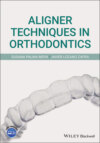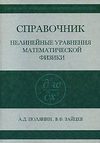Читать книгу: «Aligner Techniques in Orthodontics», страница 3
About the Authors
Dr Susana Palma Moya is an Orthodontist running a private practice in Ciudad Real, Spain. She obtained her postgraduate degree in Orthodontics and PhD in Dentofacial Orthopaedic and Orthodontics from the University of Madrid in 2002.
Was among the first group of Spanish Invisalign Providers in 2001.
International Invisalign Speaker since 2015.
Assistant professor for the postgraduate's program in orthodontics at U.C.M University in Madrid from 2003 to 2007, and currently teaching orthodontics at Salamanca University.
University degree in Orthodontics with Surfery from the International University of Cataluña UIC 2007
University degree in lingual Orthodontics by Valencia University 2009‐ 2011
Invisalign peer award 2015 (first international Award) and Invisalign peer award 2017(second European Award).
Member of the EMEA teen global group and member of Ortodoncis group in Spain
Invisalign Diamond II practitioner since 2015 and lectured in Invisalign treatment throughout Spain and Europe.
Dr Javier Lozano Zafra is an Orthodontist running a private practice in Murcia, Spain.
Degree in Dentistry, Murcia University
PhD, Murcia University
Postgraduate programme in Orthodontics, San Pablo CEU University
Honorary lecturer, Seville University, Spain
Invisalign International Speaker
Invisalign Diamond Practitioner
Honorary Member of the French Society of Aligners
Member of the Invisalign TEEN global group and member of Ortodoncis group in Spain
Acknowledgements
My thanks must go first to my husband Paco who has worked just as much as I on the preparation of this book. He has worked tirelessly in gathering together the evidence from videos and other photographic material required. I also want to thank him for his love and understanding which have given me the inspiration and strength to write it.
To my children Marta and Paco for the time I have stolen from them and the continuous inspiration and strength they provide to enable me to get the best from myself: thank you.
To my parents, Mercedes and Paco, whose love and effort encouraged me to become an orthodontist and who have been pillars of strength throughout my life.
To Align Technology for believing in me and giving me the opportunity to share my orthodontic experience with other practitioners from 2015 onwards.
I also want to thank all my orthodontics team, because without them we could not get the results we see today, which we are able to demonstrate in the book.
I want to thank my good friend and partner, Dr Javier Lozano, not only because it has been a pleasure sharing our time working on making the book (and ultimately helping many students master the aligner technique in Aligners Academy), but also because his friendship has led to a tipping point in my life.
And finally, my thanks go to the entire Wiley team for their help in producing this book.
Dr. Susana Palma Moya
To Susana and Paco,
You both take me to the ‘next level’ every day, inspire my work and my life.
I do not know where I will be in 10 or 20 years’ time but, of this I am sure, our friendship will remain one of the most important pillars of life to me.
Thanks for trusting me, for taking care of me, for having me as a friend: I hope life brings you as much happiness as I think you deserve.
To Dani,
Your smile is the most important thing to me.
Dr. Javier Lozano Zafra
About the Companion Website
This book is accompanied by a companion website:
Companion website: www.wiley.com/go/lozano‐zafra/aligner‐techniques 
The website includes:
ClinCheck videos of every treatment in the book. Watch them simultaneously to every chapter, in order to fully understand biomechanics and staging used in every treatment.
Patient Cases

1 History, Present and Future of Aligners
1.1 History of Clear Aligners
1.1.1 Early Beginning
Recent advances in technology have allowed many inventions that were previously only thought of to become a reality. Such is the case with clear aligners whose history began at the start of the 20th century.
These early retainers were developed by Hawley and others and made from Vulcanite and gold.
Rubber was first used in 1924, when Orrin Remensnyder developed the ‘Flex‐o‐Tite’,1 a device that was meant to stimulate gums through home use combined with toothpaste, and was therefore convenient for periodontally compromised patients.

Fig. 1.1 Remensnyder patent file.
On approval the patent, Remensnyder described that the device might cause small teeth movements, using the expression ‘orthodontic appliance’ to describe it on his second patent for the device.2
Twenty years later, in 1946, Harold Kesling was responsible for developing what he called the ‘Tooth Positioner’, a device made from Vulcanite meant to prevent relapse after orthodontic treatment.

Fig. 1.2 Kesling patent file.
This, alongside variations from other orthodontists, was considered a gold standard for several years, in which black vulcanite was the preferred option.
By using the tooth positioner, Kesling suggested ‘major tooth movements could be accomplished with a series of positioners by changing the teeth on the setup slightly as treatment progresses. At present this type of treatment does not seem to be practical. It remains a possibility, however, and the technique for its practical application might be developed in the future’.
In 1963 when Shanks developed a technique for producing mouth guard style transparent retainers, with a machine capable of producing them. In 1964 Nahoum patented his ‘vacuum formed dental contour appliance’, while other orthodontists such as Ponitz3 faced problems in different designs such as heating capability or plastic needs.
Up to this time these devices were used to stabilize the results of previous orthodontic treatment but were also used for minor corrections to the position of the teeth.
At the end of the 1980s, Elasto devices were developed that were made from highly flexible silicon that could be used for either one or two teeth quadrants.4 Tooth movements were possible thanks to several set‐ups that were built in different plastics, depending on the clinician’s needs, after fixed appliances.
In 1994, Sheridan developed an aligner system,5 which he called ESSIX, using clear, polymeric shell appliances with thermoplastic divots to reposition teeth, which was meant to solve minor anterior malpositions. In 1997, together with Schwartz, they standardized this by patenting a system that would be implemented in many dental offices until now, an ‘in‐office’ vacuum system.



Fig. 1.3 Schwartz and Sheridan patent file.
1.2 Origins of Align Technology
At the end of the 1990s a computerized aligner system was developed in the USA with promising features: namely, Invisalign, created by two Stanford students, Zia Chishti and Kelsey Wirth.
Zia Chishti was an orthodontic patient that found out that his own clear retainer might be applicable to the whole orthodontic treatment, as it might be able also to move teeth and avoid metal braces. This reasoning led to why they both started the Company, partnered with some other students in their campus, Apostolos Lerios and Brian Freyburger, who were responsible for the Computer Aid Design part of this start‐up.
They then developed a software to design incremental stages of retainers to straighten teeth in a campus laboratory. In 1998, they got Food and Drug Administration (FDA) approval, and were then able to sell their product to the orthodontic community, which was resistant to this radical change, mostly owing to the lack of orthodontic experience of its founders.
In 2000, they raised $140M from venture capital companies and this allowed them to start a $31 million TV campaign that same year. In 2001, the Company went public, raising an additional $128M on NASDAQ.6

Fig. 1.4 Align Technology logo.
During this time, consumers drove more than 70% of the American Orthodontists to be trained in the system.7 That same year, Align Technology made Invisalign available to general dental practitioners, arguing that offering it only to orthodontists would be considered unfair competition by dentists.
By then, Align Technology was spending most of its revenues on advertising, and losing about $18 million per year,8 which led cofounders Wirth and Chishti to resign from Align Technology before 2003.

Fig. 1.5 Align Technology annual revenue.
After a cut in advertising to one‐third of the original, the company grew from 80,000 patients treated in 2002 to 175,000 in 2004, while receiving awards for its stereolithography techniques, medical design and fast growth. In addition, the company finally achieved a profit for the first time in 2003.
In 2004 the FDA cleared expanded labelling for Invisalign and removed the permanent dentition requirement, making possible the launching of Invisalign TEEN and widening clinical applicability to include more complex cases and increase the age band for treatment.

Fig. 1.6 Align Technology stereolithographic has been heavily awarded.
In 2005, the Harvard School of Dental Medicine required for the first time that its orthodontic graduate students complete Invisalign certification before they graduated.9
1.3 Early Clear Aligner Manufacturers
Although most patented innovations have been developed by Align Technology, other companies have been working on new functionalities since the beginning of the century.
Orthoclear
Founded in 2005 by Zia Chishti, one of the Invisalign system founders, based in Pakistan, ended its operations in 2006 after a corporate agreement with Align Technology that followed litigations related to trademark.
ClearCorrect
Founded in 2006 in Texas, it was developed by one of the practitioners using Orthoclear, after it ended its operations, to be able to finish his patient treatments not using the Invisalign system, offered to old Orthoclear customers.
This was made in collaboration with a technician working with plaster models. In 2008 they digitalized the process and were able to produce larger series of aligners, which they sent to the orthodontists together with the plastic models made for every movement.
The Company was acquired in 2008 by Straumann group, together with some other companies with previous experience in the field to build an aligner system driven by this international holding.

Fig. 1.7 Models and aligners by Clear Correct.
Orthocaps
Founded in 2006 in Germany by Khan, this system has a ‘method of combining two different soft aligners for day and night time use’. These two types differ from one another in both their composition and the amount of pressure they exert. This innovation is called the TwinAligner system.
Inman aligner
Developed by a dental technician, Donal P. Inman in 2000 in Florida, it was initially for minor alignments and finally widely used by general practitioners for veneer preparation in a simple and more affordable way than other aligner brands.
1.4 Align Technology Development
Align Technology claims an investment over $1000M, which has made them a leader the clear aligner market over 20 last years, with more than 900 patents currently issued at the time of writing.
This progress has been possible thanks to an increasing clinical and engineering team that has been involved with many innovations over the years, such as:
Invisalign 1.5: this included initial SmartForces and attachments, which are attachments combined with three dimensional (3D) activations on the aligner material (by then, EX30) that help creating counterforces to achieve desired movement.
Invisalign G3: this included passive aligners on the arch with less movement to allow class II and III elastics on patients with A‐P correction needed, as well as laser cut precision cuts or hooks.
Invisalign G4: Optimized attachments for root control movements, open bite, and pressure points on aligners on teeth with small clinical crowns that could not accommodate double attachments.

Fig. 1.8 Optimized attachments for anterior open bite.
SmartTrack: Align Technology’s proprietary material for aligners, launched for its increased fitting and elasticity.
Invisalign G5: mostly for vertical malocclusions treatment, including specific protocols for Spee curve intrusion, passive attachments or precision ramps to help disoccluding posterior sectors.

Fig. 1.9 Passive attachments for anterior intrusion.
Invisalign G6: specific movement protocol for premolars extraction as well as exclusive attachments group designed to fulfil the best outcome in these cases.
Invisalign G7: designed for improved finishing with functionalities such as specific lateral incisors attachments.
One week wear: an aspect that helped to reduce the treatment length resulting from changing the aligners every 7 days instead of 14, as had previously been the case (after an internal clinical study).
Mandibular advancement: this is one of the features that has further increased the range of cases treated, as it includes not just orthodontic treatments, but functional ones, substituting classical twin blocks or mandibular advancements for power wings.
These, together with further functionalities covered in this book can help the orthodontist to achieve the same results as with braces, and combined with auxiliary techniques such as TADs, intermaxillary elastics, buttons, surgery: any malocclusion can now be solved with aligners.
1.5 Current Situation and Future of Aligners
Since the beginning of the twentieth century there have been vast improvements in the field of orthodontics. These range from edgewise appliances to the latest straightwise ones and self‐ligating braces.
If we were to search ‘orthodontics’ in PubMed, we would now find more than 70,000 entries, indicating that the profession is becoming more and more relevant for a global population that is demanding both health and aesthetics in their smile.

Fig. 1.10 Results in PubMed for ‘orthodontics’.
As seen in the history of clear aligners, it is clear that the number of papers published on aligners is much lower than in the entire field of orthodontics, likely because of its relatively newness, with developments only coming in the last 5–10 years. The requirements for publishing a paper in a peer‐reviewed journal can make it very difficult to fully appreciate their growth in the orthodontic community.
That being said, what we can see is that the popularity of aligners has been powered by Align Technology over the last 20 years, given that the majority of papers published have referred directly to the ‘Invisalign’ technique, and it has only been relatively recently that other brands have attempted to enter the market.

Fig. 1.11 Results in PubMed for ‘invisalign’ from 1999 to 2019.
It is for this reason that the patients mentioned in this book have been treated entirely using aligners produced by Align Technology; however, the biomechanical approach can be extended to any brand that, in the future, is able to develop a reliable product to treat any malocclusion using aligners and auxiliary techniques.
We constantly aim to analyse, study and understand what is happening within the field of orthodontics and strive to be on the edge of innovation, always one step ahead in order to provide our patients with the best solution for the situation that they face. We have focused on the most promising aligner brands available at this moment but we are aware that with technological advances everything may change very quickly.
1.6 Promising Aligner Initiatives
1.6.1 ClearCorrect by Straumann
Straumann is one of the larger dental companies in the world, and is known for dental implants. With the acquisition of ClearCorrect in 2019, a company founded in Texas in 2006, they entered the Aligner marketplace offering the following:
Two aligner options: unlimited or individual (including just a single aligner), a flexible option to suit each practitioners needs.
Free treatment setup (you do not pay for anything except the aligners).
Polyurethane aligners, 0.3 inches (approx. 7.5 mm) thick, a very common material.
Unscalloped trim line extended past the gingival margin, intended to increase retention over scalloped aligners, therefore reducing the need for attachments and improving aesthetics.

Fig. 1.12 ClearCorrect aligner retention chart.
From: Cowley DP, Mah J, O'Toole B. The effect of gingival‐margin design on the retention of thermoformed aligners. J Clin Orthod 2012; 46(11): 697–702.
None of these aspects have been followed through a clinical study or published in a journal, so although this seems promising, we will have to wait to see how the system develops in the future.
1.6.2 SureSmile by Dentsply
Dentsply is the largest dental company in the world, with an extensive portfolio of dental products. Although initially focused on restorative dentistry they have recently incorporated dental implants and clear aligners. The acquisition of SureSmile from Orametrix in 2018 allowed them to enter the aligner market with a system displaying the following characteristics.
The only aligner system linking cone beam computed tomography (CBCT) with cephalometric X‐ray and virtual simulation of movement.
Hybrid treatment, being able to mix braces and aligners.
In‐practice produced aligners, where the practitioner is sent the files to print three‐dimensional models that are used to vacuum‐form aligners with Essix plastics.

Fig. 1.13 SureSmile aligner software combined with CBCT.
1.6.3 F22 by Sweden and Martina
Sweden and Martina is a dental implant company from Italy that developed an aligner system alongside Prof. Siciliani from the University of Ferrara. The system has the following characteristics:
Mentoring from a member of the University of Ferrara throughout the duration of the treatment.
Chromatic stability, owing to less pigment retention from the plastic material used for the aligners, and proven through clinical study by the university.
Optimal fitting, leaving a space smaller than 40 μm between the aligner and the teeth.
20% lighter force transmission than other aligner materials, according to one study by the university.
Increased comfort, as a result of the university’s trimming protocol.
Increased retention, as a result of a design based on a paper published by Cowley10 suggesting higher values of retention are obtained when aligners are cut regularly and straight at the level of the gingival margin zenith.

Fig. 1.14 F22 chromatic stability.
From Lombardo et al. Optical properties of orthodontic aligners—spectrophotometry analysis of three types before and after aging. Prog Orthod 2015;16:41.












